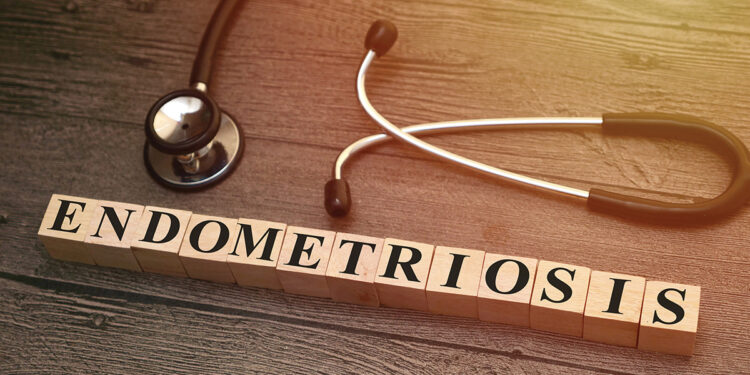March is National Endometriosis Awareness Month

It’s a chronic disease that affects roughly 10% (190 million) of reproductive age women and girls globally. Many may be confused by what endometriosis actually is. Any woman who suffers from it will adamantly note it’s not simply a “bad period with a few cramps.” Sufferers may spend days hunched over in debilitating pain. Treatment may require expensive medication and sometimes involves invasive and painful surgeries. It is uncontrollable painful bleeding that makes it nearly impossible to even get to work or to school. It’s a diagnosis that can literally change a woman’s entire life. Thanks to National Endometriosis Awareness Month, more and more people are gaining a better understanding of how real and debilitating this condition truly is.
The aim is not only to spread awareness of the disease, but also highlight the consequences of living with endometriosis for the sufferer, the care giver(s) and anyone affected by the disease. It is also designed to make the medical community, employers, the education sector, politicians, and society in general more aware of how this disease consumes a woman’s life. For sufferers, it is hoped they can embrace more consistent care and treatment while also providing an opportunity for them to actively help make a difference. A general lack of awareness by both women and health care providers can result in appreciable delay from when a woman first experiences symptoms until she is eventually diagnosed and treated. Pregnancy has been known to relieve symptoms, but it is not recognized as a cure for the disease.
Endometriosis is a common benign but painful gynecologic condition. Studies suggest that the risk of some types of malignancies such as breast cancer is higher in women with endometriosis. Endometriosis is a disorder in which the endometrial tissue, or the inner lining of the uterus, grows outside the uterus, most commonly the ovaries and Fallopian tubes. The endometrial tissue is the same tissue that thickens throughout the menstrual cycle and sheds (bleeds) causing the menstrual period. When it occurs outside of the confines of the uterus, the blood is left with nowhere to go, which results in intense pain within the pelvic region and can sometimes lead to the formation of cysts or adhesions.
The symptoms of endometriosis can include chronic pelvic pain, heavy menstrual periods, bleeding between periods, fatigue, bloating or nausea, depression or anxiety and trouble with fertility. Because many other conditions can cause these symptoms, endometriosis is often difficult to diagnose. While the causes of endometriosis are not always clear, it tends to run in families. As such, women have a higher risk of developing the disease if their mother and/or sister(s) are also affected. Even though endometriosis has been associated with immunological dysfunctions and inflammation, it has not been conclusively proven to be an autoimmune disease.
Treating this condition calls for symptom management with pain medication, drug therapy and hormonal treatments. Surgically, it may require the removal of the misplaced endometrial tissue while simultaneously preserving the uterus. With severe cases – or in instances where women do not desire to reproduce in the future – a hysterectomy may be performed.
Hope On The Horizon
A clinical trial of the first non-hormonal, non-surgical treatment for endometriosis, started in 2023 in Scotland, and is showing promising results. Andrew Horne, a professor of gynecology and reproductive sciences at the University of Edinburgh and president-elect of the World Endometriosis Society blames the issues of knowing how to treat it and understanding it, on a lack of research and awareness, driven by funding shortages. Dr Horne says that the trial, which he co-leads, grew out of closer examinations of how endometriosis lesions form. By taking samples from patients during diagnostic laparoscopies, his team found patients with peritoneal endometriosis had significantly higher levels of a chemical called lactate in their pelvises. Lactate is produced when the body breaks down glucose. With its increased presence, researchers suggested it had a hand in the development of the endometriosis lesions, similar to the role lactate plays in helping cancer cells proliferate. With this knowledge, scientists looked for a drug that had already been tested in cancer patients, dichloroacetate (DCA) which is also used to treat rare types of metabolic disorders in children with excess lactic acid build up in the blood.
A small group of patients who were treated with DCA reported less pain and better quality of life. A trial with a larger cohort, plus a placebo arm, is next. If the drug is approved, which may be possible within the next five to seven years, DCA will be the first new endometriosis treatment discovered in four decades.
There is still much research to be done and the lack of medical understanding of endometriosis impedes progress of diagnosis as well as treatment. Diagnosing endometriosis is an arduous process in that it almost always requires surgery: most lesions can be found only by inserting a camera. To speed things up, scientists have been looking for “biomarkers”, which are the signatures of proteins or processes related to a disease that show up somewhere easy to test, like a patient’s blood or urine.
Dr Horne, who believes that more research is required to test how endometriosis biomarkers appear in larger, more distinct populations. But, after years of relative inaction, he now sees endometriosis research as “a fast-moving field”.
It is important to spend time in March educating our selves about this debilitating disease that affects so many women. Sadly, endometriosis is an illness no one truly gets until they actually get it, and diagnosis can take years sometimes due to the difficulty of pinpointing it. Regular OB/GYN checkups and listening to your body with the continued advancements of research and education in concert will urge us forward to better opportunities for keeping a handle on this disease.







